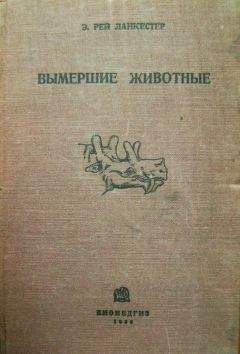Марио Ливио - φ – Число Бога. Золотое сечение – формула мироздания
Bois, Y.-A., Joosten, J., Rudenstine, A. Z., and Janssen, H. Piet Mondrian. Boston: Little, Brown and Company, 1995.
Boring, E. G. A History of Experimental Psychology. New York: Appleton-Century-Crofts, 1957.
Bouleau, C. The Painter’s Secret Geometry. New York: Harcourt, Brace & World, 1963.
Curchin, L., and Fischler, R. “Hero of Alexandria’s Numerical Treatment of Division in Extreme and Mean Ratio and Its Implications”, Phoenix, 35 (1981): 129–133.
Curtis, W. J. R. Le Corbusier: Ideas and Forms. Oxford: Phaidon, 1986.
Duckworth, G. E. Structural Patterns and Proportions in Vergil’s Aeneid. Ann Arbor: University of Michigan Press, 1962.
Emmer, M. The Visual Mind. Cambridge, MA: MIT Press, 1993.
Fancher, R. E. Pioneers of Psychology. New York: W. W. Norton & Company, 1990.
Fechner, G. T. Vorschule der Aesthetik. Leipzig: Breitkopf & Härtel, 1876.
Fischler, R. “How to Find the ‘Golden Number’ Without Really Trying”, Fibonacci Quarterly, 19 (1981): 406–410.
Fischler, R. “On the Application of the Golden Ratio in the Visual Arts”, Leonardo, 14 (1981): 31–32.
Fischler, R. “The Early Relationship of Le Corbusier to the Golden Number”, Environment and Planning B, 6 (1979): 95–103.
Godkewitsch, M. “The Golden Section: An Artifact of Stimulus Range and Measure of Preference”, American Journal of Psychology, 87 (1974): 269–277.
Hambidge, J. The Elements of Dynamic Symmetry. New York: Dover Publications, 1967.
Herz-Fischler, R. “An Examination of Claims Concerning Seurat and the Golden Number”, Gazette des Beaux-Arts, 125 (1983): 109–112.
Herz-Fischler, R. “Le Corbusier’s ‘regulating lines’ for the villa at Garches (1927) and other early works”, Journal of the Society of Architectural Historians, 43 (1984): 53–59.
Herz-Fischler, R. “Le Nombre d’or en France de 1896 а 1927”, Revue de l’Art, 118 (1997): 9–16.
Hockney, D. Secret Knowledge. New York: Viking Studio, 2001.
Howat, R. Debussy in Proportion. Cambridge: Cambridge University Press, 1983.
Kepes, G. Module, Proportion, Symmetry, Rhythm. New York: George Braziller, 1966.
Larson, P. “The Golden Section in the Earliest Notated Western Music”, Fibonacci Quarterly, 16 (1978): 513–515.
Le Courbusier. Modulor I and II. Cambridge, MA: Harvard University Press, 1980.
Lendvai, E. Béla Bartók: An Analysis of His Music. London: Kahn & Averill, 1971.
Lowman, E. A. “Some Striking Proportions in the Music of Bela Bartók”, Fibonacci Quarterly, 9 (1971): 527–537.
Marevna. Life with the Painters of La Ruche. New York: Macmillan Publishing Co., 1974.
McManus, I. C. “The Aesthetics of Simple Figures”, British Journal of Psychology, 71 (1980): 505–524.
Nims, J. F. Western Wind. New York: McGraw-Hill, 1992.
Nuland, S. B. Leonardo da Vinci. New York: Viking, 2000.
Osborne, H. ed. The Oxford Companion to Art. Oxford: Oxford University Press, 1970.
Putz, J. F. “The Golden Section and the Piano Sonatas of Mozart”, Mathematics Magazine, 68 (1995): 275–282.
Sadie, S. The New Grove Dictionary of Music and Musicians. New York: Grove, 2001.
Schiffman, H. R., and Bobka, D. J. “Preference in Linear Partitioning: The Golden Section Reexamined”, Perception & Psychophysics, 24 (1978): 102–103.
Schillinger, F. Joseph Schillinger. New York: Da Capo Press, 1976.
Schillinger, J. The Mathematical Basis of the Arts. New York: Philosophical Library, 1948.
Schwarz, L. “The Art Historian’s Computer”, Scientific American (April 1995): 106–111.
Somfai, L. Béla Bartók: Compositions, Concepts, and Autograph Sources. Berkeley: University of California Press, 1996.
Svensson, L. T. “Note on the Golden Section”, Scandinavian Journal of Psychology, 18 (1977): 79–80.
Tatlow, R., and Griffiths, P. “Numbers and Music”, in The New Grove Dictionary of Music and Musicians, 18 (2001): 231–236.
Watson, R. I. The Great Psychologists. Philadelphia: J. B. Lippincott Company, 1978.
White, M. Leonardo the First Scientist. London: Little, Brown and Company, 2000.
Woodworth, R. S., and Schlosberg, H. Experimental Psychology. New York: Holt, Rinehart and Winston, 1965.
Zusne, L. Visual Perception of Form. New York: Academic Press, 1970.
8. Звездное небо над нами и плиточный пол у нас под ногамиCohen, J., and Stewart, I. The Collapse of Chaos. Discovering Simplicity in a Complex World. New York: Penguin Books, 1995.
Fischer, R. Financial Applications and Strategies for Traders. New York: John Wiley & Sons, 1993.
Gardner, M. Penrose Tiles to Trapdoor Ciphers. New York: W. H. Freeman and Company, 1989.
Gleick, J. Chaos. New York: Penguin Books, 1987.
Lesmoir-Gordon, N., Rood, W., and Edney, R. Introducing Fractal Geometry. Cambridge: Icon Books, 2000.
Mandelbrot, B. B. Fractal Geometry of Nature. New York: W. H. Freeman and Company, 1988.
Mandelbrot, B. B. “A Multifractal Walk Down Wall Street”, Scientific American (February 1999): 70–73.
Matthews, R. “The Power of One”, New Scientist, July 10, 1999, 27–30.
Peitgen, H.-O., Jürgens, H., and Saupe, D. Chaos and Fractals. New York: Springer-Verlag, 1992.
Peterson, I. “Fibonacci at Random”, Science News, 155 (1999): 376–377.
Peterson, I. The Mathematical Tourist. New York: W. H. Freeman and Company, 1988.
Peterson, I. “A Quasicrystal Construction Kit”, Science News, 155 (1999): 60–61.
Prechter, R. R. Jr., and Frost, A. J. Elliot Wave Principle. Gainesville, GA: New Classics Library, 1978.
Schroeder, M. Fractals, Chaos, Power Laws. New York: W. H. Freeman and Company, 1991.
Steinhardt, P. J., Jeong, H. C., Saitoh, K., Tanaka, M., Abe, E., and Tsai, A. P. “Experimental Verification of the Quasi-Unit-Cell Model of Quasicrystal Structure”, Nature, 396 (1998): 55–57.
Stewart, I. Does God Play Dice? London: Penguin Books, 1997.
Walser, H. The Golden Section. Washington, DC: The Mathematical Association of America, 2001.
Может быть, Бог – математик?Baierlein, R. Newton to Einstein: The Trail of Light. Cambridge: Cambridge University Press, 1992.
Barrow, J. D. Impossibility. Oxford: Oxford University Press, 1998.
Chandrasekhar, S. Truth and Beauty. Chicago: University of Chicago Press, 1987.
Chown, M. “Principia Mathematica III”, New Scientist, August 25, 2001, 44–47.
Davis, P. J., and Hersh, R. The Mathematical Experience. Boston: Houghton Mifflin Company, 1998.
Dehaene, S. The Number Sense. Oxford: Oxford University Press, 1997.
Deutsch, D. The Fabric of Reality. New York: Penguin Books, 1997.
Hersh, R. What Is Mathematics, Really? New York: Oxford University Press, 1997.
Hill, T. P. “The First Digit Phenomenon”, American Scientist, 86 (1998): 358–363.
Kleene, S. C. “Foundations of Mathematics”, Chicago: Encyclopaedia Britannica (1971), 1097–1103.
Lakatos, I. Mathematics, Science and Epistemology. Cambridge: Cambridge University Press, 1978.
Lakoff, G., and Nüсez, R. Where Mathematics Comes From. New York: Basic Books, 2000.
Livio, M. The Accelerating Universe. New York: John Wiley & Sons, 2000.
Maor, E. To Infinity and Beyond: A Cultural History of the Infinite. Princeton, NJ: Princeton University Press, 1987.
Matthews, R. “The Power of One”, New Scientist, July 10, 1999, 26–30.
Penrose, R. The Emperor’s New Mind. Oxford: Oxford University Press, 1989.
Penrose, R. Shadows of the Mind. Oxford: Oxford University Press, 1994.
Pickover, C. A. The Loom of God. Cambridge, MA: Perseus Books, 1997.
Popper, K. R., and Eccles, J. C. The Self and Its Brain. New York: Springer International, 1977.
Raimi, R. “The Peculiar Distribution of the First Digit”, Scientific American (December 1969): 109–119.
Raskin, J. http://www.jefraskin.com/forjef2/jefweb-compiled/unpublished/effectiveness_mathematics/
Robinson, A. “From a Formalist’s Point of View”, Dialectica, 23 (1969): 45–49.
Russell, B. A History of Western Philosophy. New York: Simon and Schuster, 1945.
Russell, B. Human Knowledge, Its Scope and Its Limits. New York: Simon and Schuster, 1948.
Weisstein, E. http://matworld.wolfram.com/BenfordsLaw.html.
Wolfram, S. A New Kind of Science. Champaign, IL: Wolfram Media, 2002.
Ссылки на источники
Автор и издатель приносят искреннюю благодарность за разрешение перепечатать следующий материал, защищенный законами об авторском праве.
Рисунки, чертежи, репродукцииРисунки 1, 2, 3, 7, 9, 10, 11, 12, 14a, 14b, 18, 20a, 20b, 20c, 20d, 20e, 21, 24, 25a, 25b, 26, 27, 29, 30, 33a, 33b, 35, 37, 40, 41, 42, 44a, 44b, 49, 57a, 57b, 58, 61, 62, 63, 64, 86, 89, 91, 97a, 97b, 97c, 101a, 101b, 102a, 102b, 103a, 103b, 105, 106a, 106b, 107, 112, 114, 123, 124 и в Приложении 1, Приложении 2, Приложении 3 и Приложении 4 выполнил Джеффри Л. Уорд.
Рис. 4: Музей морских раковин Бейли-Мэтьюз.
Рис. 5: Коллекция Честера Дейла. Фото © 2002 Совет попечителей Национальной галереи искусств в Вашингтоне. © 2002 Сальвадор Дали, Фонд «Гала-Сальвадор Дали»/Общество защиты прав художников (ARS), Нью-Йорк.
Рис. 6: Перепечатано с разрешения правообладателя из книги John D. Barrow, Pi In the Sky (Oxford: Oxford University Press, 1992).
Рис. 13: © Британский музей, Лондон.
Рис. 17: Фотоархив «Хирмер».
Рис. 19: Перепечатано с разрешения правообладателя из книги Robert Dixon, Mathographics (Mineola: Dover Publications, 1987).
Рис. 22 и 23, внизу: перепечатано с разрешения правообладателя из книги H. E. Huntley, The Divine Proportion (Mineola: Dover Publications, 1970).
Рис. 23, вверху: Коллекция фотографий Элисон Франц, Американская школа классических исследований в Афинах.
Рис. 28: Перепечатано с разрешения правообладателя из книги Trudi Hammel Garland, Fascinating Fibonaccis. Mystery and Magic in Numbers © 1987 by Dale Seymour Publications, репринт Pearson Learning, подразделение Pearson Education, Inc.
Рис. 31–32: Перепечатано с разрешения правообладателя из книги Trudi Hammel Garland, Fascinating Fibonaccis. Mystery and Magic in Numbers © 1987 by Dale Seymour Publications, репринт Pearson Learning, подразделение Pearson Education, Inc.
Рис. 34: Перепечатано с разрешения правообладателя из статьи Brandmüller, “Five fold symmetry in mathematics, physics, chemistry, biology and beyond”, in I. Hargitta, ed. Five Fold Symmetry (Singapore: World Scientific, 1992).
Рис. 36: Перепечатано с разрешения правообладателя из книги N. Rivier et al., J. Physique, 45, 49 (1984).
Рис. 38: Королевское собрание © 2002, Ее Величество Королева Елизавета II.
Рис. 39: Перепечатано с разрешения правообладателя из книги Edward B. Edwards, Pattern and Design with Dynamic Symmetry (Mineola: Dover Publications, 1967).
Рис. 43: С разрешения NASA и научной группы «Hubble Heritage».
Рис. 46, 45, 47, 50: Алинари/ «Арт-Ресурс», Нью-Йорк.
Рис. 47: Линии перспективы. Перепечатано с разрешения правообладателя из книги Laura Geatti, Michelle Emmer (ed.), The Visual Mind: Art and Mathematics (Cambridge: the MIT Press,1993).
Рис. 52: Собственность Амброзианской библиотеки. Все права защищены. Перепечатывать запрещается.




